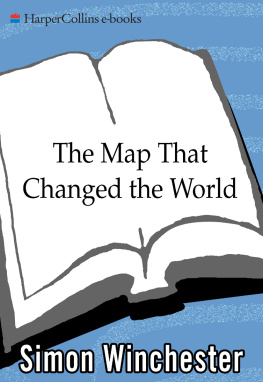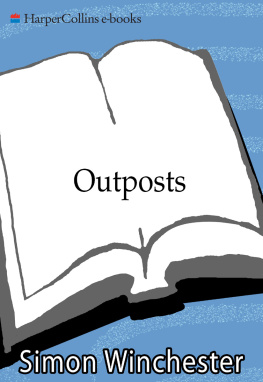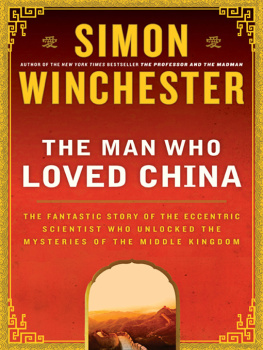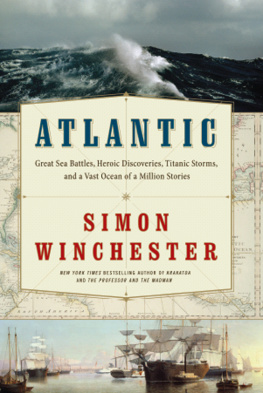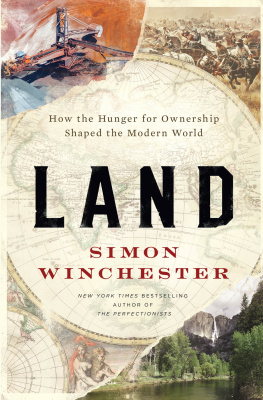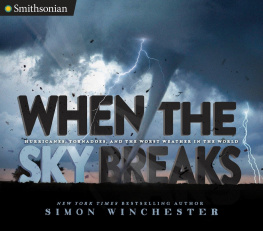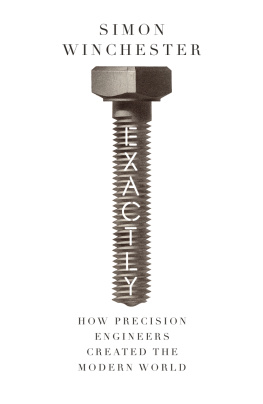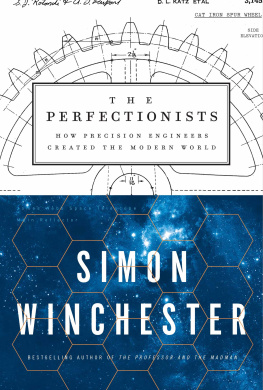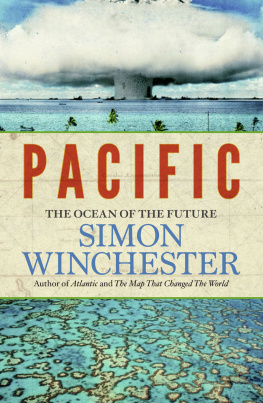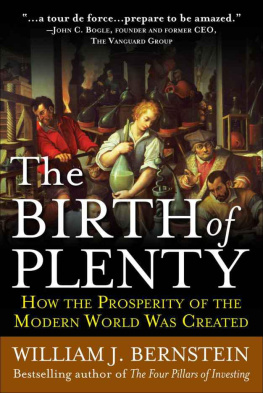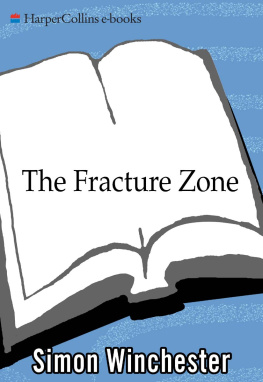Simon Winchester - The Map That Changed the World: William Smith and the Birth of Modern Geology
Here you can read online Simon Winchester - The Map That Changed the World: William Smith and the Birth of Modern Geology full text of the book (entire story) in english for free. Download pdf and epub, get meaning, cover and reviews about this ebook. year: 2009, publisher: HarperCollins e-books, genre: Science. Description of the work, (preface) as well as reviews are available. Best literature library LitArk.com created for fans of good reading and offers a wide selection of genres:
Romance novel
Science fiction
Adventure
Detective
Science
History
Home and family
Prose
Art
Politics
Computer
Non-fiction
Religion
Business
Children
Humor
Choose a favorite category and find really read worthwhile books. Enjoy immersion in the world of imagination, feel the emotions of the characters or learn something new for yourself, make an fascinating discovery.
- Book:The Map That Changed the World: William Smith and the Birth of Modern Geology
- Author:
- Publisher:HarperCollins e-books
- Genre:
- Year:2009
- Rating:4 / 5
- Favourites:Add to favourites
- Your mark:
- 80
- 1
- 2
- 3
- 4
- 5
The Map That Changed the World: William Smith and the Birth of Modern Geology: summary, description and annotation
We offer to read an annotation, description, summary or preface (depends on what the author of the book "The Map That Changed the World: William Smith and the Birth of Modern Geology" wrote himself). If you haven't found the necessary information about the book — write in the comments, we will try to find it.
The Map That Changed the World: William Smith and the Birth of Modern Geology — read online for free the complete book (whole text) full work
Below is the text of the book, divided by pages. System saving the place of the last page read, allows you to conveniently read the book "The Map That Changed the World: William Smith and the Birth of Modern Geology" online for free, without having to search again every time where you left off. Put a bookmark, and you can go to the page where you finished reading at any time.
Font size:
Interval:
Bookmark:
William Smith and the Birth of Modern Geology

FOR HAROLD READING
In days of old, old William Smith,
While making a canal, Sir,
Found out how the strata dipped to the east
With a very gentle fall, Sir.
First New Red Sand and marl a-top
With Lias on its border,
Then the Oolite and the Chalk so white
All stratified in order.
Sing, cockle-shells and oyster-banks,
Sing, thunder-bolts and screw-stones,
To Father Smith we owe our thanks
For the history of a few stones.
Source: Anniversary dinner, A. C. Ramsay, 1854
C HAPTER -O PENING I LLUSTRATIONS
Incorporated in eighteen of the nineteen chapter openings (including those of the prologue and the epilogue) will be found small line drawings of Jurassic ammoniteslong-extinct marine animals that were so named because their coiled and chambered shells resembled nothing so much as the horns of the ancient Egyptian ram-god, Ammon . Soun Vannithones drawings of these eighteen specimens are placed in the book in what I believe to be the ammonites exact chronological sequence. This means that the books first fossil, Psiloceras planorbis , which illustrates the prologue, is the oldest ammonite, and is to be found deepest down in any sequence of Jurassic sediments; by the same token the final fossil, Pavlovia pallasioides , comes from a much higher horizon, and is very much younger. Much like the epilogue it illustrates, it was fashioned last. It must be said, though, that anyone who flips rapidly from chapter to chapter in the hope of seeing a speeded-up version of the evolutionary advancement of the ammonite will be disappointed: Ammonitesfloating, pulsating, slow-swimming beasts that were hugely abundant in the warm blue Jurassic seasdo not display any conveniently obvious changes in their featuresthey neither become progressively smaller with time, nor do they become larger; their shells do not become more complex, or less. True, some ammonites with very ridged shells do indeed evolve into smoother-shelled species over the ages, but these same creatures then become rougher and more ridged again as time wears on, managing thereby to confuse and fascinate all who study them. Only studies of ammonites from successive levels will reveal sure evidence of evolutionary change, and such study is too time consuming for the chance observer. Ammonites are, however, uniformly lovely; and they inspired William Smith: two reasons good enough, perhaps, for including them as symbols both of Smiths remarkable prescience and geological times amazing bounty. However: eighteen ammonites and nineteen chapter openings? There is one additional illustration, of the microscopic cross-section of a typical oolitic limestone, which I have used to mark the heading for chapter 11. Since this chapter is very different in structure from all the others, and since much of its narrative takes place along the outcrop of those exquisitely lovely, honey-colored Jurassic rocks known in England as the Great Oolite and the Inferior Oolite, it seemed appropriate and reasonable to ask the legions of ammonites, on just this one occasion, to stepor swim very slowlyto one side.
Prologue: Psiloceras planorbis
Chapter One: Echioceras raricostatum
Chapter Two: Amaltheus margaritatus
Chapter Three: Dactylioceras tenuicostatum
Chapter Four: Harpoceras falciferum
Chapter Five: Hildoceras bifrons
Chapter Six: Sonninia sowerbyi
Chapter Seven: Stephanoceras humphriesianum
Chapter Eight: Parkinsonia parkinsoni
Chapter Nine: Zigzagiceras zigzag
Chapter Ten: Tulites subcontractus
Chapter Eleven: Oolitic Limestone
Chapter Twelve: Clydoniceras discus
Chapter Thirteen: Macrocephalites macrocephalus
Chapter Fourteen: Sigaloceras calloviense
Chapter Fifteen: Peltoceras athleta
Chapter Sixteen: Cardioceras cordatum
Chapter Seventeen: Aulacostephanoides mutabilis
Epilogue: Pavlovia pallasioides
T EXT I LLUSTRATIONS
A N OTE ON THE M AP I NSERT
The brilliance of William Smiths achievement can be amply demonstrated by comparing his great map of 1815 with the one produced today by the British Geological Survey. The similarity of so much of the detailvisible even at a scale where much cannot be seenis proof absolute of the accuracy and prescience of Smiths work, yet does not admit of the one signal difference between the two productions: that while the survey map is the fruit of the labors of thousands, William Smiths map, drawn a century and a half before, is the result of the dedication and determination of one man who worked for almost twenty years, always entirely alone.

Psiloceras planorbis
A bove one of the many grand marble staircases within the east wing of Burlington House, the great Palladian mansion on the north side of Londons Piccadilly, hangs a pair of huge sky blue velvet curtains, twisted and tasseled silk ropes beside them. Although many may wonder in passing, rarely does any one of the scores of people who climb and descend the stairs inquire as to what lies behind the drapes. A blocked-off window, perhaps? A painting too grotesque to show? A rare Continental tapestry, faded by the sunlight?
Once in a while someone curious and bold will demand a look, whereupon a functionary will emerge from behind a door marked Private, and with practiced hand will tug gently on the silk ropes. The curtains will slowly part, revealing an enormous and magnificent map of England and Wales, engraved and coloredin sea blue, green, bright yellow, orange, umberin a beguiling and unfamiliar mixture of lines, patches, and stippled shapes.
The German Ocean, it says to the east of the English coast, instead of todays North Sea. There is, in an inset, a small cross-section of what is said to be the underside of the country from Wales to the river Thames. Otherwise all is readily familiar, comfortingly recognizable. The document is exquisitely beautifula beauty set off by its great size, more than eight feet by sixand by the fact that it towerslooms, indeedabove those who stand on the staircase to see it. The care and attention to its detail is clear: This is the work of a craftsman, lovingly done, the culmination of years of study, months of careful labor.
At the top right is its description, engraved in copperplate flourishes: A Delineation of The Strata of England and Wales with part of Scotland; exhibiting the Collieries and Mines; the Marshes and Fen Lands originally Overflowed by the Sea; and the Varieties of Soil according to the Variations in the Sub Strata; illustrated by the Most Descriptive Names. There is a signature: By W. Smith. There is a date: Augst 1, 1815.
This, the official will explain, is the first true geological map of anywhere in the world. It is a map that heralded the beginnings of a whole new science. It is a document that laid the groundwork for the making of great fortunesin oil, in iron, in coal, and in other countries in diamonds, tin, platinum, and silverthat were won by explorers who used such maps. It is a map that laid the foundations of a field of study that culminated in the work of Charles Darwin. It is a map whose making signified the beginnings of an era not yet over, that has been marked ever since by the excitement and astonishment of scientific discoveries that allowed human beings to start at last to stagger out from the fogs of religious dogma, and to come to understand something certain about their own originsand those of the planet they inhabit. It is a map that had an importance, symbolic and real, for the development of one of the great fundamental fields of studygeologywhich, arguably like physics and mathematics, is a field of learning and endeavor that underpins all knowledge, all understanding.
Font size:
Interval:
Bookmark:
Similar books «The Map That Changed the World: William Smith and the Birth of Modern Geology»
Look at similar books to The Map That Changed the World: William Smith and the Birth of Modern Geology. We have selected literature similar in name and meaning in the hope of providing readers with more options to find new, interesting, not yet read works.
Discussion, reviews of the book The Map That Changed the World: William Smith and the Birth of Modern Geology and just readers' own opinions. Leave your comments, write what you think about the work, its meaning or the main characters. Specify what exactly you liked and what you didn't like, and why you think so.

